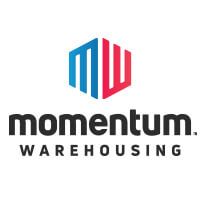Navigating the B2B Order Fulfillment Landscape for Business Growth
B2B Order Fulfillment is defined as “Business to Business”.
Reliable business to business order fulfillment partners have never been more critical for the success of ecommerce sellers. Establishing a network of trusted partnered businesses opens up various revenue streams but also enhances operational efficiencies, particularly within the supply chain. Sound relationships here, ensures that the next stage of B2C delivery runs smoothly.
Currently, the global eCommerce fulfillment services market is valued at $97.3 billion, with predictions of a growth rate of 13.9% annually until 2030. Given this competitive arena, selecting the ideal B2B fulfillment provider is a nuanced challenge. This guide will delve into the essentials of B2B order fulfillment to aid your decision-making process.
The Essence of B2B Order Fulfillment – Why It’s Important
The case of Revlon’s bankruptcy in June 2022 starkly highlights the pivotal role of B2B fulfilment optimization. Revlon’s struggle, exacerbated by the pandemic, underscored the complexities of securing and managing raw materials—each lipstick requiring up to 40 distinct components. That means that each tube of lipstick requires up to 40 raw materials or parts, which need shipping and storage for. When a part of the supply chain crumbles, and B2B delivery falls through, it can cause shockwaves through the remaining supplychain.
This example vividly illustrates how competent B2B order fulfillment services could potentially offset such a bankruptcy situation. It emphasizes the service’s value beyond mere product transportation. B2B instead includes comprehensive management of orders, inventory, and timely deliveries between businesses.
Communication in B2B Order Fulfillment
A crucial, often overlooked aspect of B2B fulfillment is the necessity for clear, prompt communication between all parties involved. Successful B2B transactions hinge on transparently sharing the following information:
- Order Details
- Inventory Status
- Addressing any Logistical Challenges
- Bulk Dropshipping
- Drone Deliveries
- Same-Day Services
There’s alot of data here to manage between businesses. That being said, Communication in in B2B order fulfilment is critical so that all moving components work in tandem to ensure profitability.
B2B vs. B2C Order Fulfillment: Understanding the Distinctions
Determining whether your business requires B2B or B2C fulfillment services hinges on your specific operational needs and product journey. For businesses reliant on a complex supply chain for product assembly, like Revlon, B2B fulfillment is essential. Similarly, suppliers to direct-to-consumer brands will benefit from robust B2B fulfillment partnerships.
Conversely, businesses with established warehousing that focus on direct customer deliveries should consider B2C fulfillment solutions.
Key Considerations in B2B and B2C Order Fulfillment
Order Volume
B2B transactions typically involve larger, bulk orders but fewer overall transactions. B2C sees a higher volume of smaller, individual orders.
Cost Implications
B2B order fulfillment generally incurs higher costs due to the need for specialized handling and infrastructure. Conversely, B2C benefits from streamlined, cost-effective processes.
Regulatory Compliance
B2B operations must navigate complex supply chain regulations, including data privacy measures like EDI. Alternatively, B2C faces simpler consumer-focused regulations.
Delivery Expectations
While B2B prioritizes delivery reliability and scheduling, B2C order fulfillment emphasizes speed to meet rising consumer expectations for rapid delivery.
Financial Agreements
B2B order fulfillment often involves negotiated contracts and credit-based payments, contrasting with the immediate payment model typical in B2C transactions.
Pricing Strategies
B2B allows for flexible pricing based on volume and business needs. However, B2C maintains fixed prices for all consumers.
Grasping these differences is crucial for businesses to tailor their fulfillment strategies effectively, ensuring they meet their goals and adapt to the dynamic ecommerce landscape efficiently.
